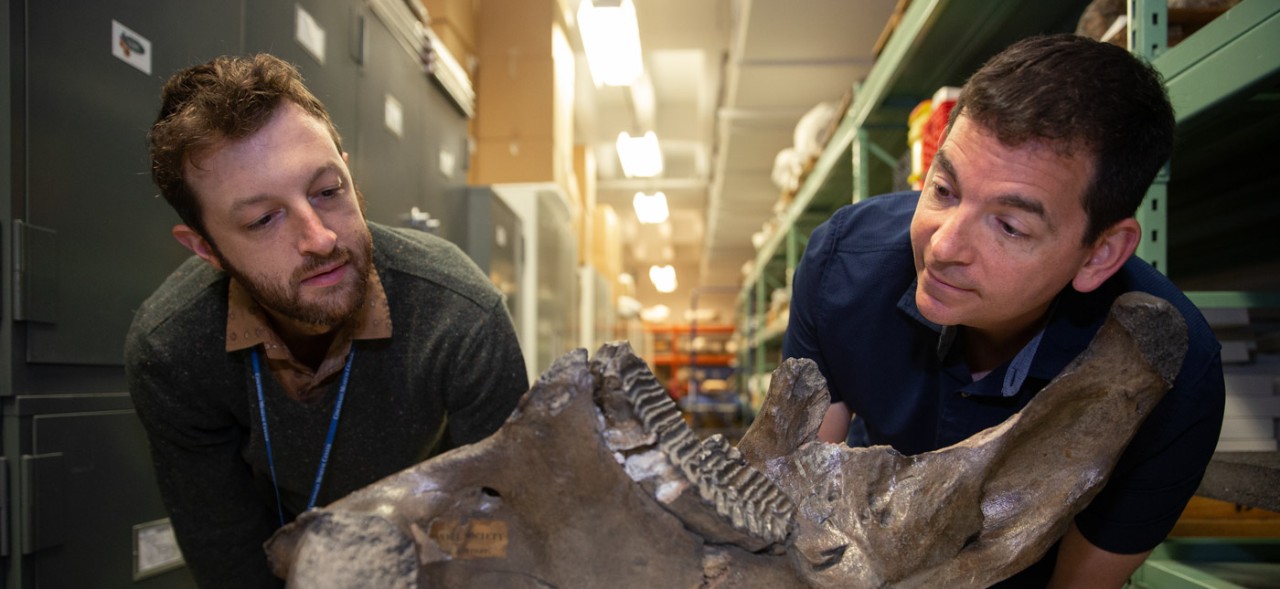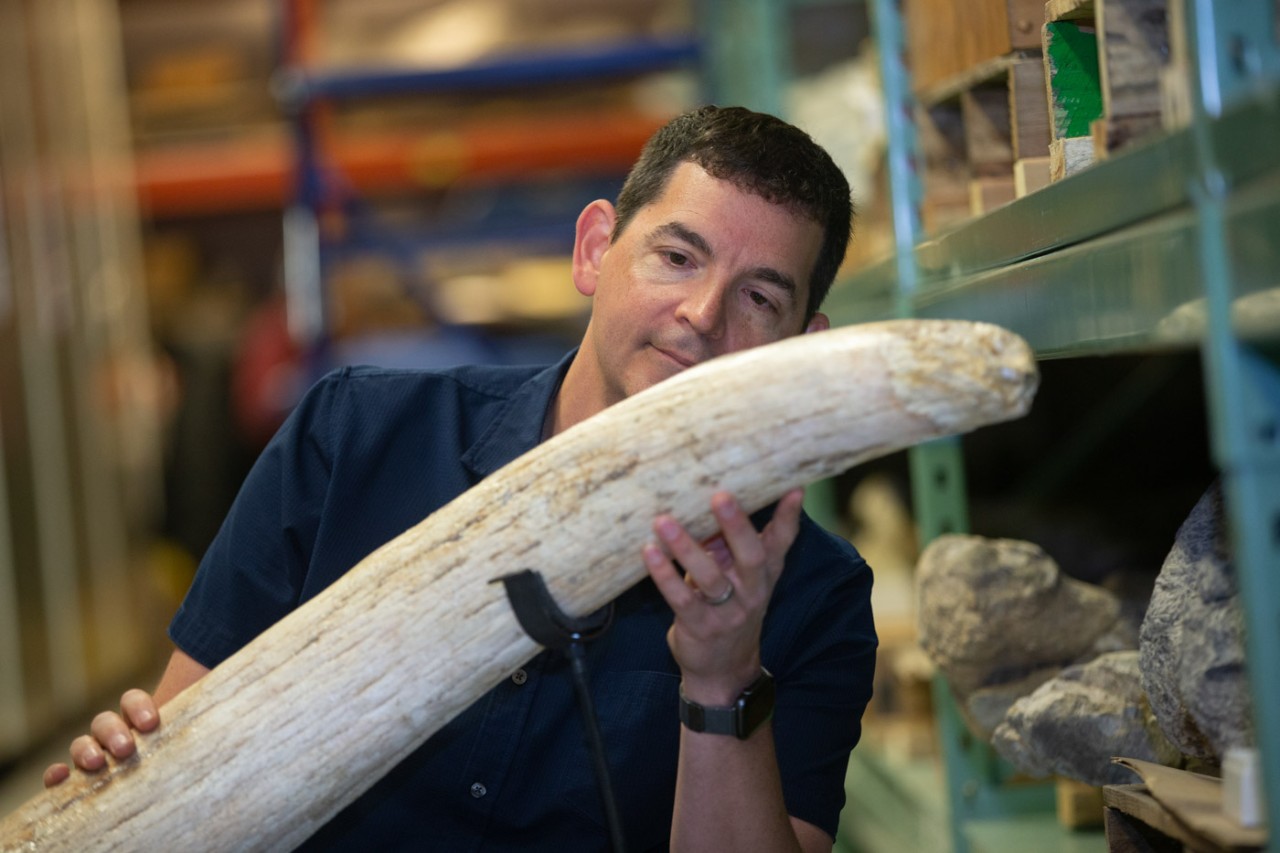
Forbes: When did mammoths go extinct?
Environmental DNA can be misleading, UC paleontologist says
Forbes talked to a University of Cincinnati paleontologist about why environmental DNA is not the best barometer for dating extinctions.
UC College of Arts and Sciences assistant professor Joshua Miller was lead author of a paper published in Nature titled “When did mammoths go extinct?” that refuted a previous study suggesting mammoths went extinct much more recently than believed.
“We can radiocarbon date all kinds of things: bones, teeth, charcoal, leaves. That’s very powerful. But currently, we can’t independently date DNA found in sediments,” Miller told Forbes.
Miller said environmental DNA can persist for thousands of years in arctic climates, making it unreliable for dating extinctions.
Miller said mammoths probably went extinct between 10,000 and 13,000 years ago. Some island populations survived longer.
Featured image at top: Cameron Schwalbach, paleontology collections manager for the Cincinnati Museum Center’s Geier Collections and Research Center, and UC assistant professor Joshua Miller examine a mammoth skull. Photo/Andrew Higley/UC Marketing + Brand

UC assistant professor Joshua Miller poses with a bronze mammoth outside the Cincinnati Museum Center's Geier Collections and Research Center. Photo/Andrew Higley/UC Marketing + Brand
UC Geosciences in the News

UC associate professor Joshua Miller examines a mammoth tusk at the Cincinnati Museum Center's Geier Collections and Research Center. Photo/Andrew Higley/UC Marketing + Brand
- Spectrum News: Paleontologist disputes date when mammoths went extinct
- European Times: New study refutes timeline of mammoth extinction
- Science Times: When did mammoth extinction take place?
Related Stories
WVXU: UC experts discuss P&G's new green policies
September 23, 2021
UC environmental studies professors Amy Townsend-Small and Robert Hyland talk to WVXU about Procter & Gamble Co.'s new policies designed to reduce the company's carbon footprint.
Grist: UC researcher tracks down neglected methane leaks
April 8, 2021
Amy Townsend-Small is investigating long-ignored sources of greenhouse gases in the petrochemical industry.
NYT: UC professor talks about science behind mammoth study
August 13, 2021
UC associate professor Brooke Crowley talks to the New York Times about how strontium analysis allows researchers to understand how long-extinct animals lived.
Mother Jones: UC biogeochemist talks about abandoned wells
December 9, 2020
UC associate professor Amy Townsend-Small talks to Mother Jones about the growing list of oil and natural gas wells across America.
Columbus Dispatch: State investigates groundwater risks
September 8, 2020
UC associate professor Amy Townsend-Small talks about the public health risks if chemicals from injection wells migrate to groundwater.
Smithsonian: UC student interprets bison 'mummy'
November 2, 2020
UC paleoecologist Joshua Miller and doctoral student Abby Kelly talk to Smithsonian about a rare mummified steppe bison found in Alaska that could improve our understanding of life on Earth 28,000 years ago.
Billings Gazette: Feathers reveal clues to bird birthplaces
October 21, 2021
UC professor Brooke Crowley uses isotopic analysis of feathers to track the origins of wide-ranging hawks and falcons. The technique could help identify important habitat for conservation.
NPR's 1A: UC expert explains risk of leaky gas wells
October 19, 2021
UC associate professor Amy Townsend-Small explains the environmental risk of uncapped natural gas wells in Appalachia.
New York Times: Mastodon's tusks reveal life of fighting, roaming
June 27, 2022
The New York Times highlighted research by geologists and anthropologists at the University of Cincinnati who used isotopic analysis to track the seasonal migration of a mastodon across the Midwest more than 13,000 years ago.
Earth.com: Dwarf hippos in Madagascar preferred forests
July 14, 2023
Earth.com and other science media highlight UC's discoveries about extinct hippos in Madagascar. An isotopic analysis found that dwarf hippos were not grazers of grasslands but instead preferred sedges and leaves in forests. This demonstrated the importance of forests to endemic wildlife on the island.
